Averaging about 5,400 feet in elevation, the park has a dry windy climate with temperatures that vary from summer highs of about 100 degrees F to winter lows well below freezing. About half of the park is designated wilderness. |
 The Petrified Forest is known for its fossils, especially fallen trees that lived about 225 million years ago. The sediments containing the fossil logs are part of the widespread and colorful Chinle Formation, from which the Painted Desert gets its name. Beginning about 60 million years ago, the Colorado Plateau, was pushed upward by tectonic forces and exposed to increased erosion. All of the park's rock layers above the Chinle, except geologically recent ones found in parts of the park, have been removed by wind and water. Paleontologists have been unearthing and studying the park's fossils since the early 20th century. The Petrified Forest is known for its fossils, especially fallen trees that lived about 225 million years ago. The sediments containing the fossil logs are part of the widespread and colorful Chinle Formation, from which the Painted Desert gets its name. Beginning about 60 million years ago, the Colorado Plateau, was pushed upward by tectonic forces and exposed to increased erosion. All of the park's rock layers above the Chinle, except geologically recent ones found in parts of the park, have been removed by wind and water. Paleontologists have been unearthing and studying the park's fossils since the early 20th century.
|
|
The two RV
Gypsies walked the Giant Logs Interpretive Loop Trail
- 0.25 miles - very easy trail
at Rainbow Forest Museum Parking Lot |
|
|
-
Petrified wood is mostly quartz. The physical characteristics of cylindrical quartz cause it to break cleanly when stressed, resulting in the lengthy symmetrical segments seen on this trail.
-
Petrified wood in the Petrified Forest National Park is almost solid quartz, weighing on average between 150-180 pounds per cubic foot. It's so hard, you can only cut it with a diamond tipped saw.
-
Iron Oxides give the wood its distinctive red, yellow and orange hues.
-
Carbonized organic compounds and residues yield black, tan and brown tones.
|
|
In many places small sections of logs lay scattered about the ground. The petrified wood displays a variety of colors resulting from the minerals it contains--pine quartz for white and gray, iron for the reds and yellows, browns, blues, and greens, and carbon and manganese for the black. |
|
|
|
|
|
|
Below: A very smart way to make a fence post. |
|
|
|
Below Plaque: Stephen T. Mather 1867-1930 Mather recognized magnificent scenery as the primary criterion for establishment of National Parks. He was very careful to evaluate choices for parks, wishing the parks to stand as a collection of unique monuments. His life is well summarized on a series of bronze markers which were posthumously cast in his honor and distributed through many parks:
"He laid the foundation of the National Park Service,
defining and establishing the policies under which its areas shall be
developed and conserved, unimpaired for future generations. There will
never come an end to the good he has done." |
|
|
|
|
Below: Karen Duquette near
sizeable sections of Old Faithful in the Giant Logs area. |
|
|
Below: The park's
largest log, known as Old Faithful is shown above and below.
It was christened Old Faithful by the wife of the park's first
superintendent. The base of the main root is seen at the large end of
the log. The rest of the root system broke off sometime earlier. The
remaining 35-foot section of the log is estimated to weigh around 44
tons. Lightning struck and fractured Old Faithful in July 1962,
and the park repaired the damage, something that would NOT be done today.
It is considered the largest because of its diameter (9 feet, 9 inches),
as well as how tall it once was. |
|
|
|
|
 FLASHBACK - Lee Duquette on the Giant Log Trail in 1987 FLASHBACK - Lee Duquette on the Giant Log Trail in 1987
|
|
Because of the arid nature of the area and the absolute lack of trees given the current climate, it can be difficult to picture the lush woodlands which existed in these areas in Triassic times. An idea of just how large the original trees must have been can be gathered from the fallen trunks as they lay on the ground. The cracks which divide most of the logs into sections are due to stress on the log. |
|
|
|
Below: Many pieces of heavily mineralized petrified wood on the Giant Logs Trail - The yellow flowers are Curlycup Gumweed (Grindelia squarrosa). This plant, native to the Great Plains, readily absorbs selenium and is considered a hazard to ranching in areas with selenium-rich soils. Historically, it may have been used for a variety of medicinal purposes. |
|
|
|
|
Petrified wood is much heavier than the original log, weighing as much as 150-200 pounds per cubic foot. |
|
|
Most of the petrified logs in the park were from trees of the variety Araucarioxylon, large trees which reached 100 feet in height and 6-8 feet in diameter. |
|
|
|
|



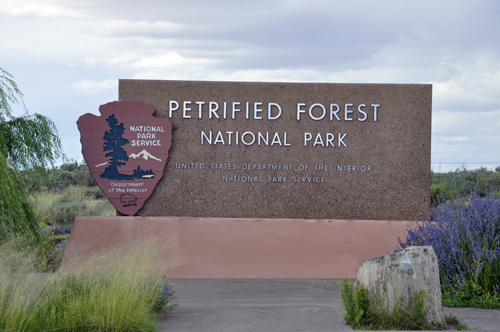
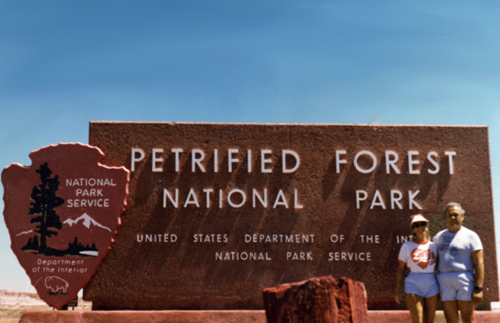
 The Petrified Forest is known for its fossils, especially fallen trees that lived about 225 million years ago. The sediments containing the fossil logs are part of the widespread and colorful Chinle Formation, from which the Painted Desert gets its name. Beginning about 60 million years ago, the Colorado Plateau, was pushed upward by tectonic forces and exposed to increased erosion. All of the park's rock layers above the Chinle, except geologically recent ones found in parts of the park, have been removed by wind and water. Paleontologists have been unearthing and studying the park's fossils since the early 20th century.
The Petrified Forest is known for its fossils, especially fallen trees that lived about 225 million years ago. The sediments containing the fossil logs are part of the widespread and colorful Chinle Formation, from which the Painted Desert gets its name. Beginning about 60 million years ago, the Colorado Plateau, was pushed upward by tectonic forces and exposed to increased erosion. All of the park's rock layers above the Chinle, except geologically recent ones found in parts of the park, have been removed by wind and water. Paleontologists have been unearthing and studying the park's fossils since the early 20th century.
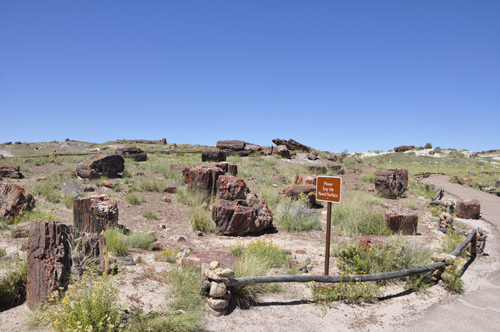
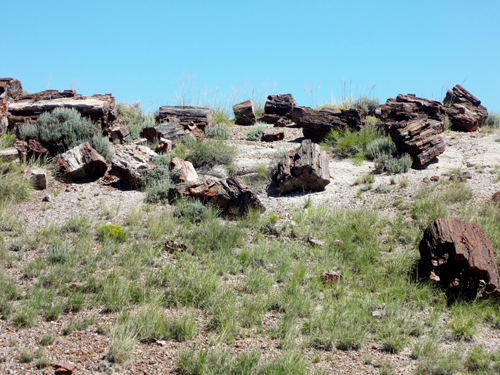

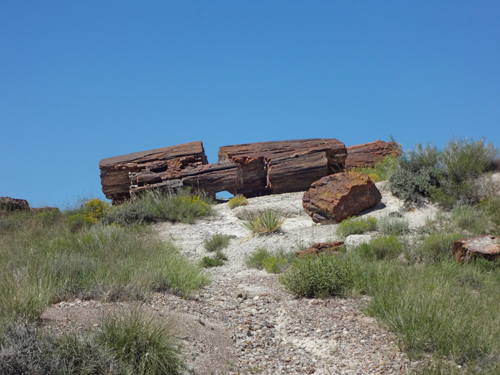
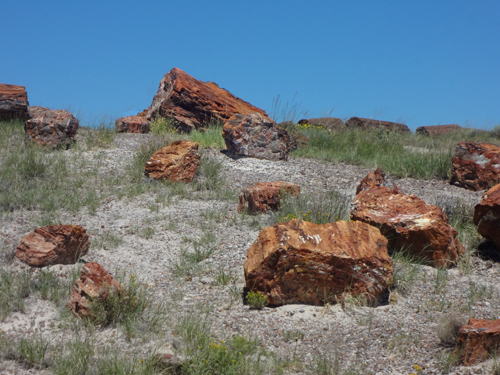
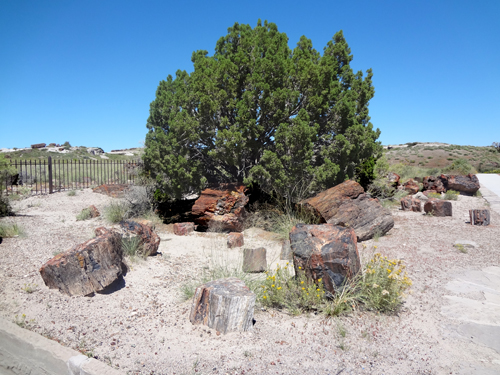
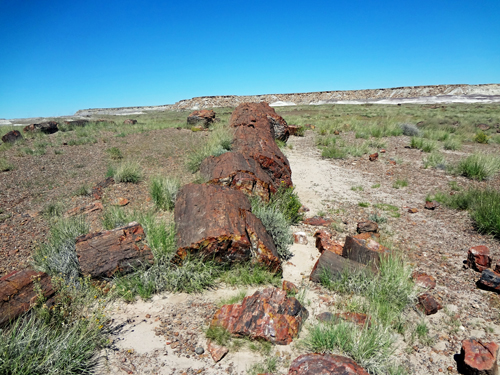
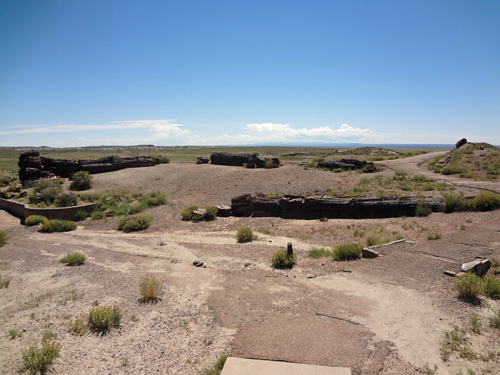
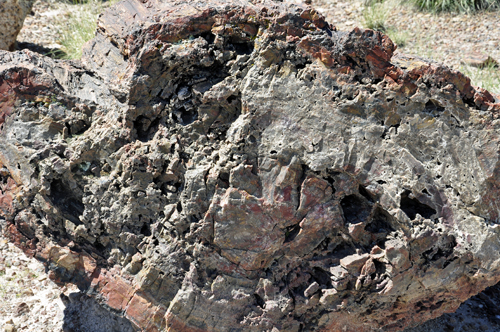
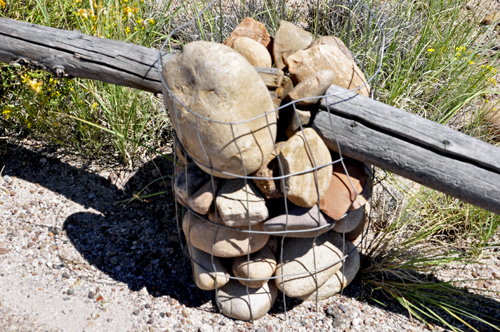
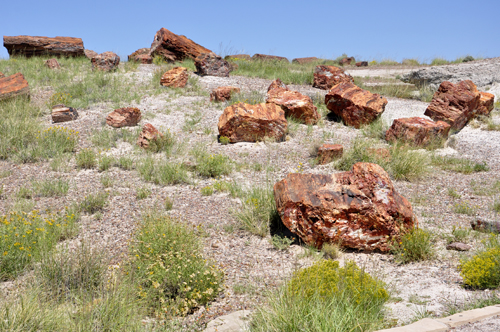
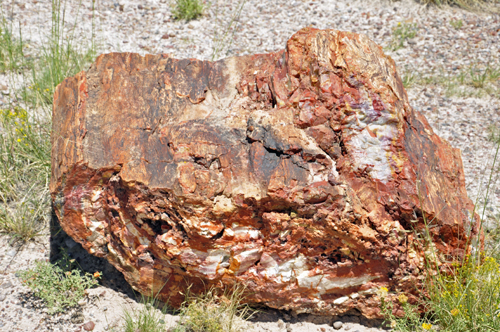
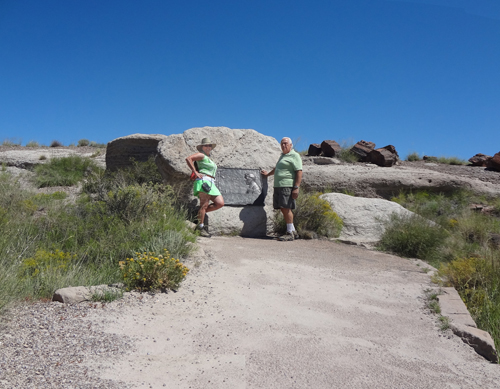
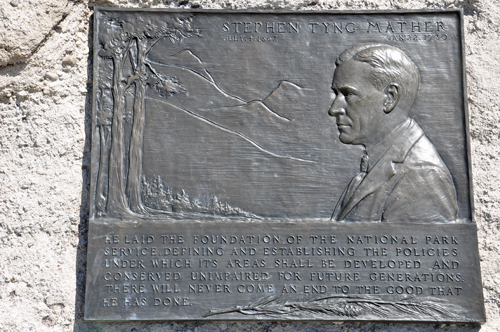
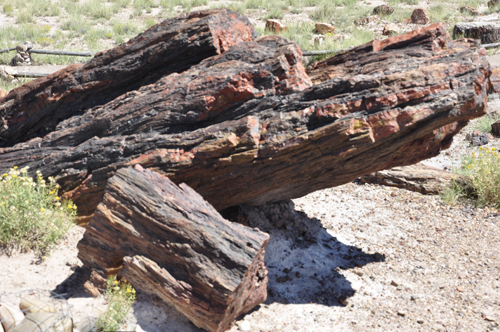
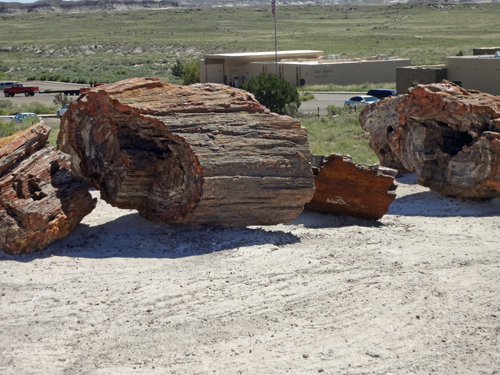
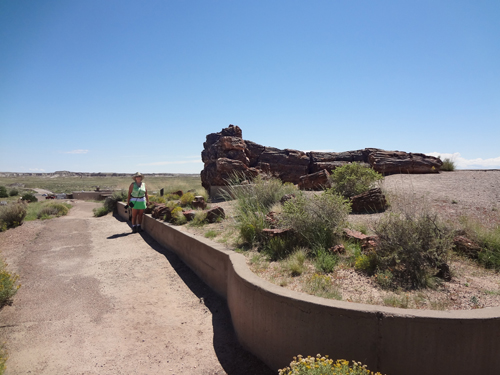
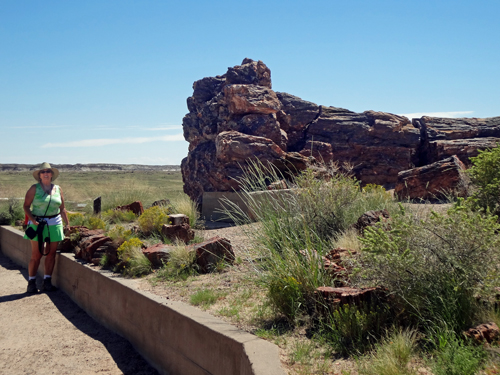
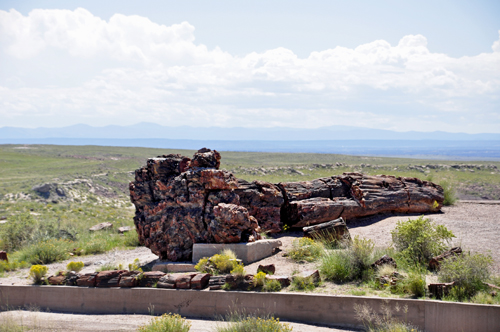
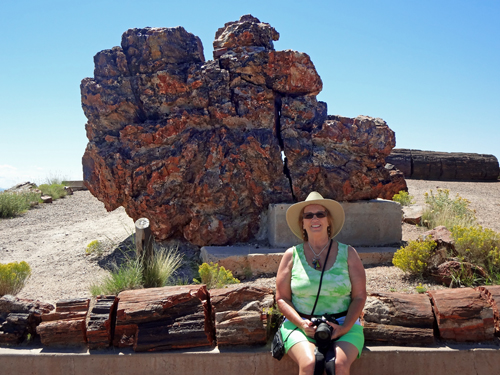
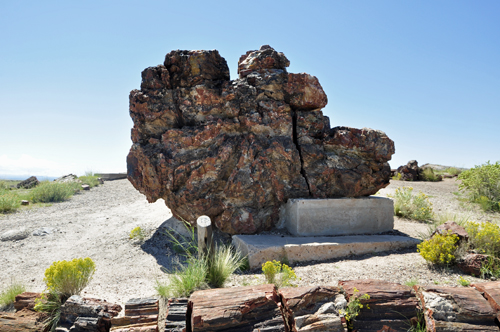
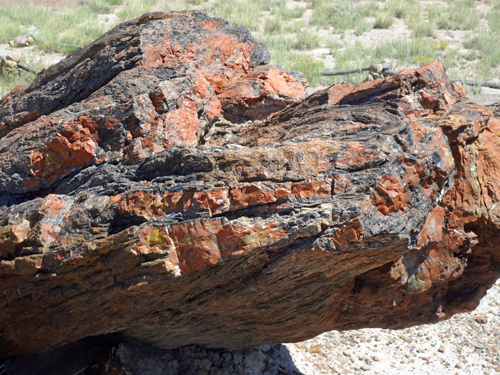
 FLASHBACK - Lee Duquette on the Giant Log Trail in 1987
FLASHBACK - Lee Duquette on the Giant Log Trail in 1987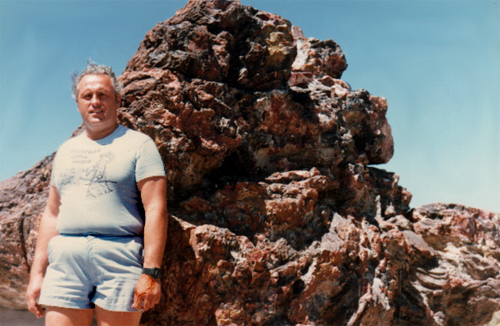
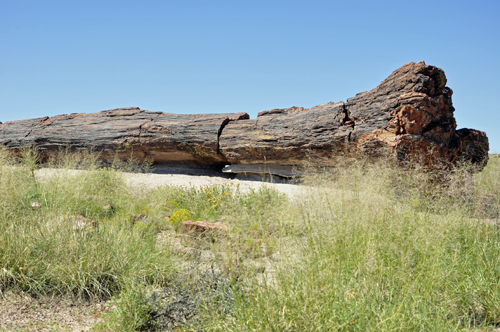
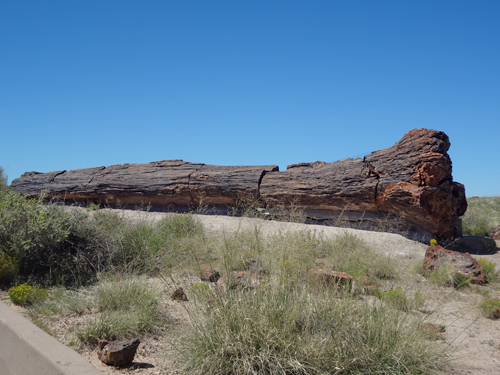
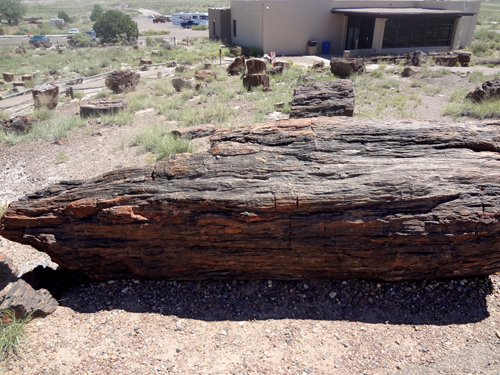
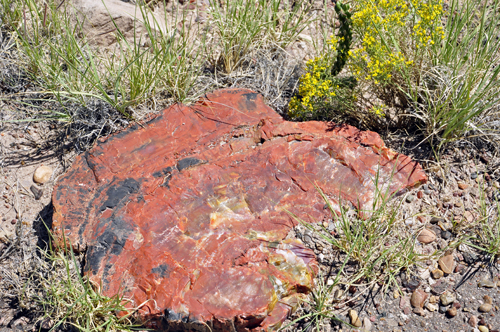
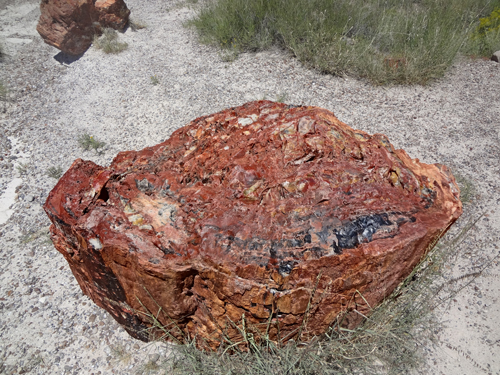

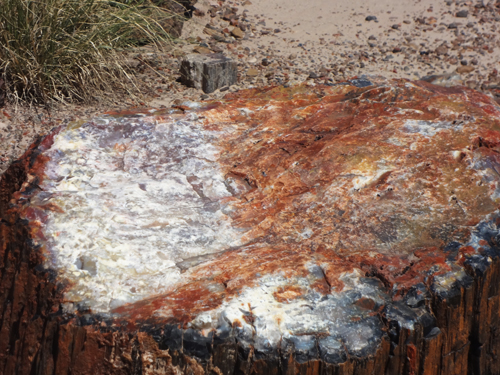
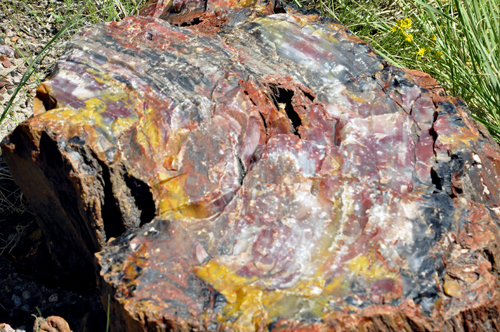
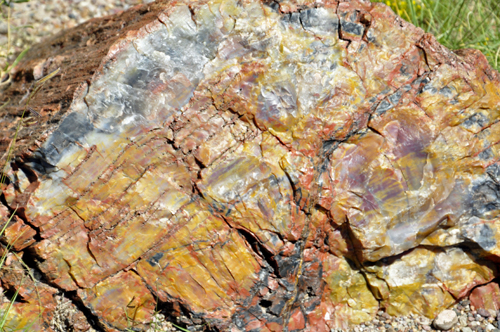
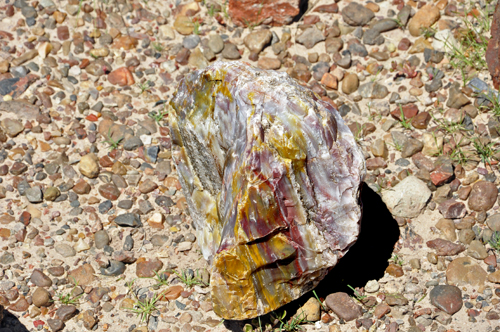
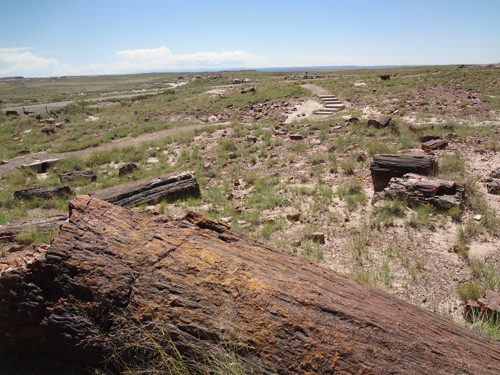
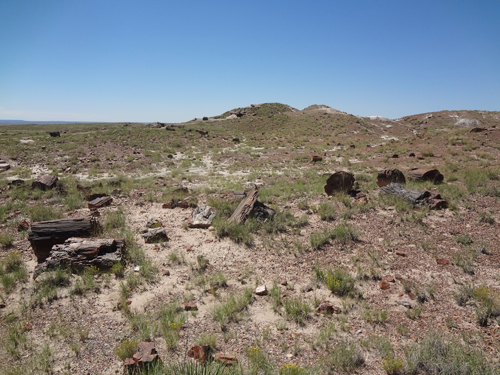
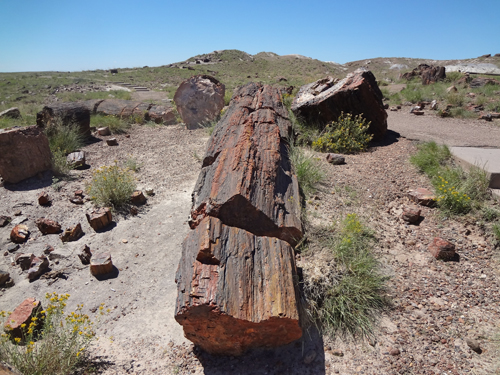

 Please continue on to see page 2 of the Petrified Forest National Park
Please continue on to see page 2 of the Petrified Forest National Park